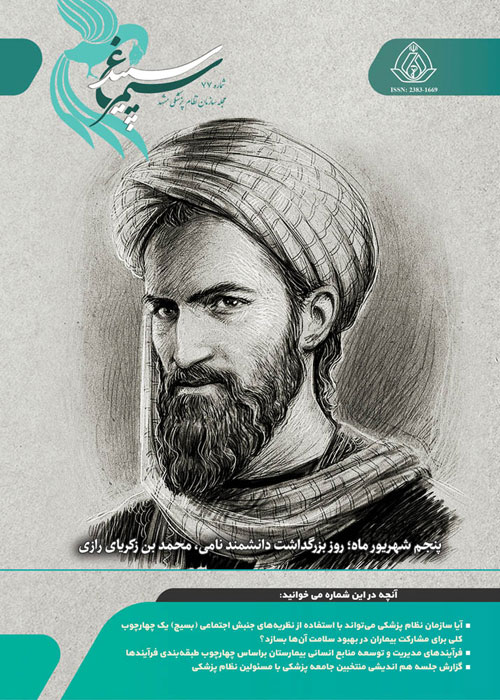Internal Medicine Residency Training in Iran: Specifications and Differences
Author(s):
Abstract:
Background
Internal Medicine is one of the earliest medical specialties in Iran and thousands of internists have been graduated in this field of medicine from Iranian universities since 1951. In this study, the characteristics of the training program in this field, job duties and income were evaluated and compared with other countries. Methods
Using the Iranian Ministry of Health and Medical Education directive for internal medicine residency training program, the features program, compulsory work hours, income and residency training period were extracted and compared with the rest of the world. Selection of other countries was depended upon data availability. Results
In Iran, the annual capacity for resident admission in internal medicine is about 280 people at 34 universities in the country. Medical doctors can apply for this residency after achieving adequate scores in the Iranian central exam for residency. The training curriculum of internal medicine is devised uniformly for all universities by Iranian Ministry of Health and Medical Education and is consisted of a 4 year training of gastroenterology, endocrinology, nephrology, pulmonary, hematology and rheumatology plus cardiology, neurology, intensive care, poisonings, emergency medicine, radiology and dermatology in hospital departments and continuity clinics. Residency training period in Iran is similar to Turkey and Canada and is lower than most European countries. Weekly working hours in an average has been determined to be 83.75 h that is higher than European countries, Canada and the USA. Four to eight years of medical service in underserved areas have been assigned for Iranian graduates before receiving certification for working in larger cities. Conclusion
Residency training in in each country is affected by different factors such as economic status, work force and distribution of facilities. Training of residents with more knowledge and skills that did not bear remarkable pressure during their study period and thus do not feel emotional exhaustion is a challenging goal for policy makers in medical education.Keywords:
Language:
Persian
Published:
Journal of Mashhad Medical Council, Volume:17 Issue: 2, 2013
Pages:
77 to 80
magiran.com/p1435934
دانلود و مطالعه متن این مقاله با یکی از روشهای زیر امکان پذیر است:
اشتراک شخصی
با عضویت و پرداخت آنلاین حق اشتراک یکساله به مبلغ 1,390,000ريال میتوانید 70 عنوان مطلب دانلود کنید!
اشتراک سازمانی
به کتابخانه دانشگاه یا محل کار خود پیشنهاد کنید تا اشتراک سازمانی این پایگاه را برای دسترسی نامحدود همه کاربران به متن مطالب تهیه نمایند!
توجه!
- حق عضویت دریافتی صرف حمایت از نشریات عضو و نگهداری، تکمیل و توسعه مگیران میشود.
- پرداخت حق اشتراک و دانلود مقالات اجازه بازنشر آن در سایر رسانههای چاپی و دیجیتال را به کاربر نمیدهد.
دسترسی سراسری کاربران دانشگاه پیام نور!
اعضای هیئت علمی و دانشجویان دانشگاه پیام نور در سراسر کشور، در صورت ثبت نام با ایمیل دانشگاهی، تا پایان فروردین ماه 1403 به مقالات سایت دسترسی خواهند داشت!
In order to view content subscription is required
Personal subscription
Subscribe magiran.com for 70 € euros via PayPal and download 70 articles during a year.
Organization subscription
Please contact us to subscribe your university or library for unlimited access!


